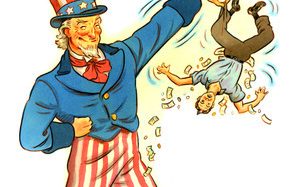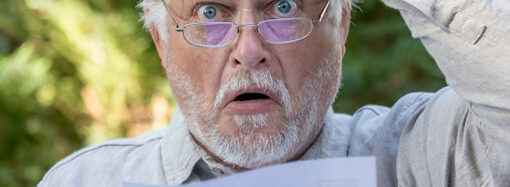Opinion Editorial
May 18, 2003
By Jon Caldara
For the Boulder Daily Camera
Tired of being stuck in traffic? Would you believe me if I told you I could guarantee a highway lane that is always congestion-free? If there were such a lane, would you pay a buck to ride on it?
In a few years you’ll have that lane.
About a decade ago carpool lanes, or High Occupancy Vehicle lanes, were constructed on I-25, north of downtown. The idea, of course, was to give an advantage of time to those who went to the trouble to organize a carpool or take a bus.
For bus riders, the carpool/bus lanes have been a godsend. Buses now get out of the traffic and fly in and out of Denver. And because buses have quick headways (meaning unlike trolleys, buses can be launched from a station as often and as soon as needed), the Boulder-Denver run is arguably the best regional transit corridor in the nation.
But have you noticed that the carpool lane on I-25 is still nearly always empty? In fact, during peak rush hour, it is only at about 30-percent to 35-percent capacity. So if you’re not in a carpool or bus, you get to sit in a parking lot while just a few feet away asphalt goes unused. Not a good thing for air quality, either, since the most pollution is caused in stop-and-go traffic.
San Diego had a similar problem on I-15. Like Denver, they had about an eight-mile, barrier-separated carpool lane that few commuters used. So they started allowing single drivers to use the HOV lane for a toll, and therefore turned it into what’s called a High Occupancy Toll, or HOT, lane.
How do you guarantee that this new HOT lane won’t get jammed with traffic too? The toll changes every few minutes according to how many cars are using it. As the HOT lane gets more crowded, the price, shown on electronic signs, goes up, discouraging drivers from choosing to buy into the lane.
Cars on the HOT lane go at full speed, so it doesn’t slow down the buses and carpoolers who still get to use it for free.
And what about the ugly toll booths? They’re not used. The toll is paid via an electronic transponder in your windshield as you drive your car, at full speed. And the money raised can be used to convert, maintain and even expand the HOT lane.
Ever notice how many folks cheat and drive alone in the carpool lane? Haven’t you wanted to? After the conversion to HOT lanes in San Diego, the violation rate dropped by well over 60 percent. The cheaters now pay.
With HOT lanes, there are no losers. The carpool lane finally gets used to capacity, and cars get out of the general-purpose lanes, freeing up traffic there. Carpoolers and bus riders are unaffected, since the lanes are congestion free, thanks to the variable pricing.
How do the folks in San Diego like it? A recent survey done by their regional government showed that commuters want HOT lanes over any other infrastructure, much more than building or widening roads or transit lines.
The quick numbers: 50 percent of all HOT lane users would like to seemore HOT lanes; 24 percent wanted to widen the highway; 13 percent wanted new roads, and 10 percent wanted to build a transit line. Even those who never use the HOT lanes love the way they reduce traffic. A plurality of them wanted more HOT lanes. Only 11 percent wanted more transit lines.
Detractors like to call HOT lanes “Lexus lanes” and say that they are made only for the wealthy to get out of traffic jams. Yet all income groups in San Diego overwhelmingly support HOT lanes. More detailed data come from the HOT lanes on California State Highway 91 in Orange County, where they are used by rich and poor at the same levels. Why? Working folks need mobility and make rational decisions. Paying $2 to get to day care on time to avoid a $20 penalty is a no-brainer.
A couple of years ago, the Colorado state Legislature passed bill requiring the Department of Transportation to convert the north I-25 HOV lanes to HOT lanes if practical. The project is moving as fast as bureaucrats and politicians will allow which means terribly slowly. Still, you should be able to see a congestion-free lane by 2005.
That assumes those who politically benefit from traffic jams don’t try to stop it.
Jon Caldara is president of the Independence Institute in Golden. He lives in Boulder.







